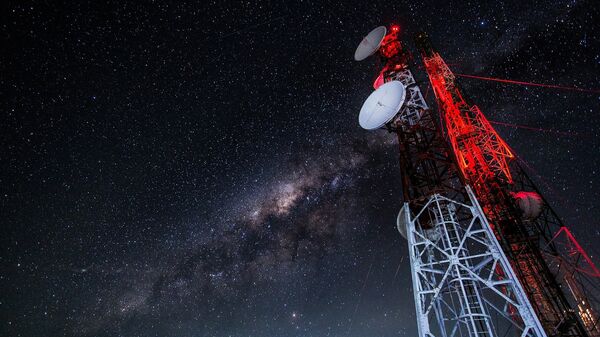An international team of astronomers has managed to track the second-ever in history of observations source of repeating fast radio bursts (FRBs), which is located in a spiral galaxy similar to the Milky Way, according to their study published in the journal Nature on Monday.
Using sophisticated telescopes of the European VLBI Network, the researchers revealed that the source is about 500 million light-years away from Earth, making it the closest known source of the FRBs.
Co-author of the study Kenzie Nimmo from the University of Amsterdam in the Netherlands explained that the object's location is “radically different from that of not only the previously located repeating FRB, but also all previously studied FRBs”.
“This blurs the differences between repeating and non-repeating fast radio bursts. It may be that FRBs are produced in a large zoo of locations across the Universe and just require some specific conditions to be visible”, Nimmo added.
The source of the new repeating FRB, also known as 180916.J0158+65, was tracked on 19 June 2019, about a year after it was initially discovered by Canada's CHIME telescope. In five hours, astronomers detected a total of four bursts that lasted less than two thousandths of a second.
“The multiple flashes that we witnessed in the first repeating FRB arose from very particular and extreme conditions inside a very tiny [dwarf] galaxy. This discovery represented the first piece of the puzzle but it also raised more questions than it solved, such as whether there was a fundamental difference between repeating and non-repeating FRBs. Now, we have localised a second repeating FRB, which challenges our previous ideas on what the source of these bursts could be,” Benito Marcote, lead study author from the Joint Institute for VLBI in Europe, stressed.
The FRBs, the first of which was identified back in 2007, are unique high-energy pulses that are believed to contain an intense emission of radio light similar to that of the Sun.
Shedding more light on the host galaxy of the FRBs may help astronomers determine the origin of these mysterious bursts, which in turn may allow researchers to reveal additional facts about the Universe.


